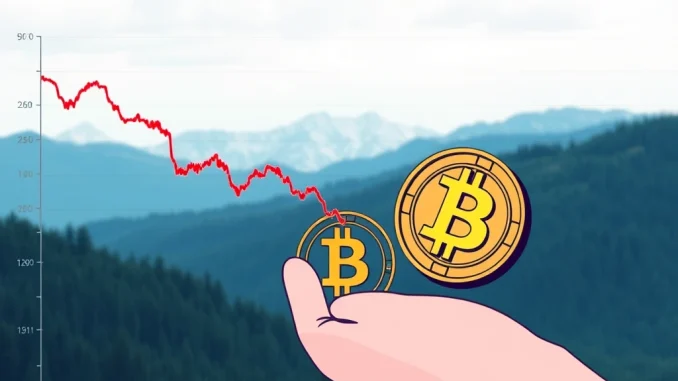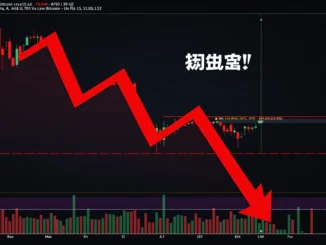
Get ready for a surprising insight into the current state of the crypto market. Recent data reveals that **Bitcoin trading volume** has reached a level not seen in years, signaling a potentially significant shift in investor behavior.
Understanding the Drop in Spot BTC Trading
According to crypto analyst Axel Adler Jr., **Spot BTC trading** activity on centralized exchanges (CEXs) recently plummeted to just $965.6 million. This figure represents the lowest point observed since October 2020. Think about that – we haven’t seen such low daily volume on major exchanges for Bitcoin in over three years.
This dramatic reduction in activity on platforms where buyers and sellers typically meet suggests something fundamental is changing. It’s not just a minor dip; it’s a return to volume levels from a completely different market environment.
Why is CEX Trading Volume So Low?
The primary explanation circulating among analysts for the suppressed **CEX trading volume** is straightforward: investors are choosing to hold their Bitcoin rather than actively trade it. This points to a strong trend towards **BTC long-term holding**, often referred to in the crypto community as ‘HODLing’.
Several factors could contribute to this holding sentiment:
- Market Confidence: Despite price fluctuations, many holders may believe in Bitcoin’s long-term value proposition, reducing the urgency to sell.
- Accumulation Phase: Some investors might be accumulating Bitcoin at current price levels, moving it off exchanges into cold storage.
- Reduced Speculation: Lower volume can indicate less short-term speculative trading occurring on centralized platforms.
- Shift to Other Venues: While CEX volume is low, some activity might be shifting to decentralized exchanges (DEXs) or over-the-counter (OTC) markets, though CEXs typically dominate spot volume.
This shift towards holding is a key **crypto market trend** that impacts liquidity and price discovery.
What Does This Crypto Market Trend Mean?
A significant drop in **Bitcoin trading volume**, particularly on CEXs, can have several implications for the market:
- Reduced Liquidity: Lower volume often means less liquidity, potentially leading to larger price swings (volatility) on smaller trades.
- Price Discovery Challenges: With fewer trades happening, it can be harder to determine a true market price based purely on exchange activity.
- Indication of Investor Sentiment: Low selling volume suggests holders are not eager to exit their positions, which can be interpreted as a bullish long-term signal by some.
- Impact on Exchanges: Centralized exchanges rely on trading volume for revenue (fees), so prolonged low volume can affect their business.
While low volume can sometimes precede significant price moves (either up or down), in this context, paired with the narrative of increased holding, it strongly supports the idea that a large portion of the supply is simply not available for sale at current prices.
The Steadfast Nature of BTC Long-Term Holding
The data on **BTC long-term holding** aligns with other metrics, such as the increasing supply of Bitcoin held in wallets that haven’t moved for over a year. This indicates a maturing market where a significant cohort of investors is focused on the multi-year potential of the asset, rather than short-term gains from **Spot BTC trading** on exchanges.
This steadfast commitment to holding is a notable characteristic of the current **crypto market trend**. It suggests underlying confidence that persists despite macroeconomic uncertainties or price consolidation periods.
In Summary: A Quiet Confidence?
The plunge in **Bitcoin trading volume** on centralized exchanges to levels not seen since late 2020 is a stark data point. It underscores a prevailing **crypto market trend** where investors are prioritizing **BTC long-term holding** over active **Spot BTC trading**. While low **CEX trading volume** can impact market dynamics like liquidity, it also paints a picture of a market where a significant portion of the supply is locked away, reflecting a quiet, steadfast confidence in Bitcoin’s future.



